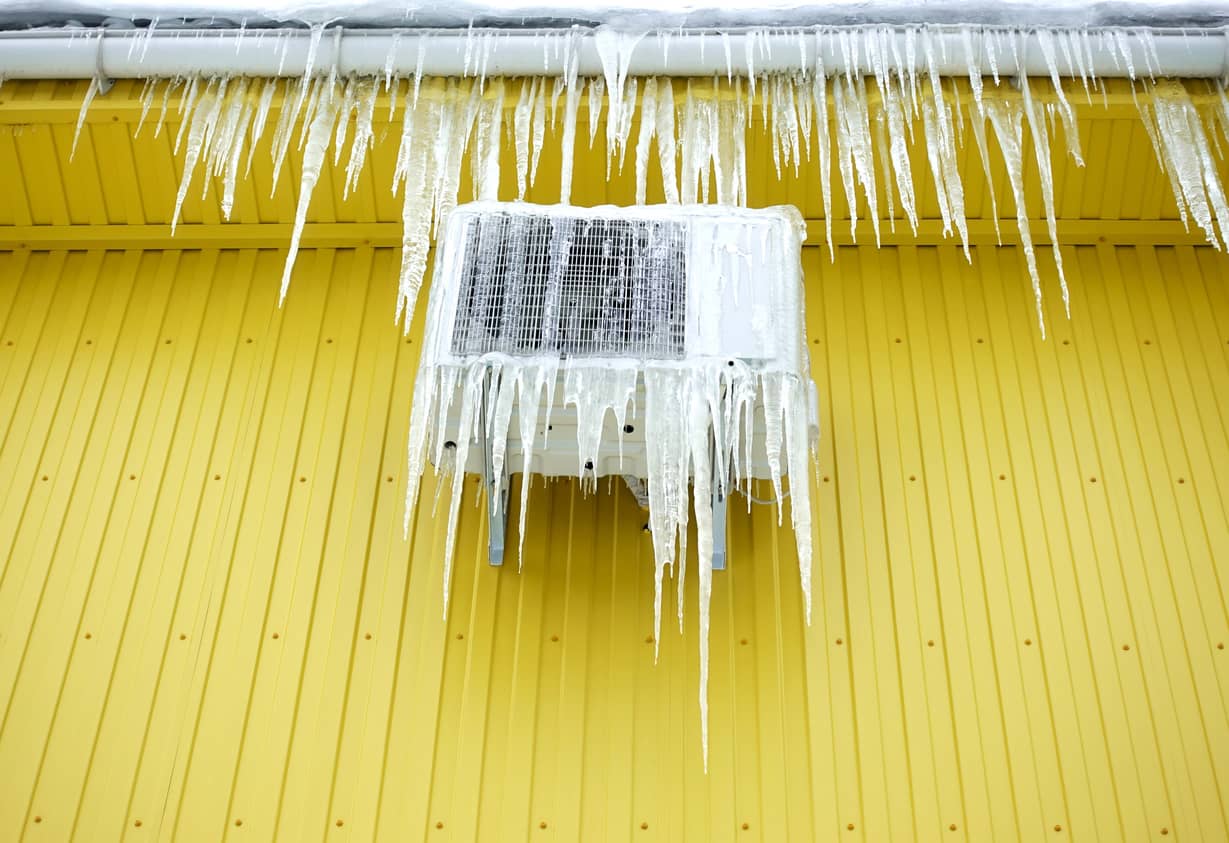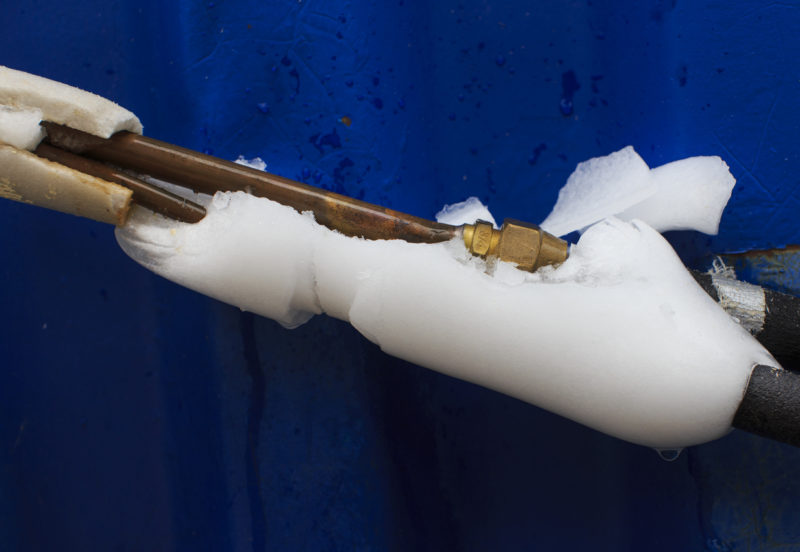Managing a Frozen AC Pipe: Effective Techniques
Managing a Frozen AC Pipe: Effective Techniques
Blog Article
We have noticed this post on What Do I Do If My AC Pipe Is Frozen below on the internet and believe it made sense to relate it with you on this site.

Intro
Uncovering that your AC pipe is iced up can be worrying, especially throughout hot summer season when you rely upon your ac unit one of the most. Understanding what to do in such a situation is essential to stop further damage to your air conditioning system and guarantee your comfort inside your home.
Comprehending the Causes
A number of aspects can add to the cold of an a/c pipe. Recognizing these reasons can aid you deal with the issue effectively.
Absence of Airflow
One typical root cause of an icy air conditioning pipe is inadequate airflow. When the air movement over the evaporator coil is restricted, it can create the coil to go down below freezing temperature level, causing ice formation on the pipe.
Low Refrigerant Levels
Insufficient cooling agent degrees in your a/c system can also lead to an icy pipe. Low cooling agent degrees can cause the pressure in the system to go down, leading to the freezing of dampness on the evaporator coil.
Winter Conditions
In colder environments, freezing temperatures outside can contribute to the freezing of air conditioning pipelines. If your air conditioner unit is not correctly insulated or if there are leaks in the ductwork, cold air can penetrate the system, triggering the pipeline to freeze.
Dirty Air Filters
Filthy or stopped up air filters can limit air flow in your air conditioning system, resulting in various problems, including an icy pipeline. It's vital to change or clean your air filters routinely to ensure correct air movement and prevent ice accumulation.
Indicators of a Frozen AC Pipe
Acknowledging the signs of a frozen AC pipe is critical for punctual activity.
Decreased Airflow
If you see a substantial decrease in air flow from your vents, it could show a frozen pipeline.
Ice Buildup on the Pipe
Visible ice accumulation on the refrigerant line or the evaporator coil is a clear indication of an icy a/c pipeline.
Strange Sounds from the Unit
Unusual audios, such as hissing or gurgling, coming from your a/c unit can signal that there's ice present on the pipe.
Immediate Actions to Take
When faced with an icy AC pipeline, it's vital to act quickly to prevent further damages to your cooling system.
Shutting off the AC
The initial step is to switch off your a/c to avoid the system from running and worsening the issue.
Looking for Blockages
Check the location around the indoor system for any type of obstructions that may be obstructing airflow, such as furnishings or curtains.
Thawing the Pipe
You can use gentle techniques like positioning towels taken in warm water around the frozen pipe to aid thaw it gradually.
Preventive Measures
Taking preventive measures can aid stay clear of future occurrences of an icy air conditioning pipeline.
When DIY Methods Fail
If your efforts to thaw the pipeline or address various other concerns are not successful, it's time to hire a specialist.
Relevance of Hiring a Professional HVAC Technician
A licensed HVAC specialist has the proficiency and tools needed to diagnose and fix issues with your AC system securely and effectively.
Normal Maintenance Checks
Arrange routine maintenance contact a specialist HVAC service technician to ensure that your AC system is running efficiently.
Altering Air Filters
Frequently replace or clean your air filters to avoid air flow limitations and maintain optimum efficiency.
Protecting Exposed Pipes
If your air conditioning pipes are exposed to chilly temperatures, consider protecting them to avoid freezing during winter season.
Looking For Professional Help
If DIY techniques fail to resolve the issue or if you're not sure concerning how to continue, it's best to seek support from a certified HVAC specialist.
Final thought
Taking care of an icy air conditioning pipe can be an irritating experience, but recognizing exactly how to react can assist lessen damages and restore convenience to your home. By comprehending the reasons, acknowledging the indicators, and taking prompt action, you can properly address the concern and avoid future occurrences.
G UP? HOW TO FIX IT?
It happens all over America. And the rest of the world probably. It’s the hottest day ever and for some darn reason your AC isn’t cooling the house. You fiddle with the thermostat to try and fix the problem. Nada. All you can do now is go outside and check the AC unit. You make your way there and find your air conditioner unit is frozen! But how?
In this post we’ll cover how you can tell that your air conditioner has frozen (other than the obvious reasons), what could have caused the freeze, and some of the things you can do about your AC freezing up. And if you have a frozen heat pump condenser, read our blog about it to learn what to do! But remember, it is always best to avoid your AC freezing up with an AC tune up. And if you are moving into a home, it's critical to get HVAC inspection so that you are aware of an AC problems before you move in.
Keep reading and you may be able to fix the frozen AC yourself. If you can’t, call an HVAC specialist. If you live in Maryland, call SuperTech HVAC for AC repair. We’ll take care of it.
How Does An Air Conditioning Unit Work?
How you probably imagine an AC works is wrong. Contrary to popular belief, an AC system does not inject cool air into a building. Instead, it removes the heat from inside and transfers it outside. Cool huh? (Pun intended).There are 4 major components among the 3 stations of an air conditioning system: the evaporator coil, the compressor, the condenser, and the refrigerant – a special chemical that links everything together through a closed loop system.
Station 1:
Warm indoor air is sucked into the return vent, through a filter, and blows over the evaporator coil. The heat is absorbed into the cold refrigerant, turning it from liquid to gas. The air, which is now cool, is blown back into the home to areas that your thermostat, i.e. you, has decided.
Station 2:
The refrigerant makes its way outside the house to the compressor, which squeezes the warm refrigerant, raising its gaseous temperature even more.
Station 3:
When the super hot vapor refrigerant reaches the condenser, the last step, the heat is expelled and absorbed into the outdoor air. The refrigerant instantly cools, which changes it from gas back to liquid form. The cold liquid refrigerant is now ready to return to station 1 and repeat the process.
Is Your AC Freezing Up? Here Are The Signs:
As you may have guessed, your air conditioner unit freezing up on a hot day is not normal.
If this happens, there's no need to panic. Often the issue can be solved with a little troubleshooting. If the AC unit is left frozen for too long however, you may find yourself with a bigger problem.
First things first, how do you know your AC is frozen?
Well, the obvious sign is the ice on your refrigerant line-set pipe. Simply check between your outdoor AC unit and your home's exterior wall to see whether your AC line frozen.
You might also have a frozen evaporator coil. This one's not as easy to check. You'll need to open a panel on the indoor unit to inspect. Don't do this unless you're handy. If you aren't, call an HVAC pro like SuperTech HVAC or you may damage something in the process.

Hopefully you enjoyed our article on What Do I Do If My AC Pipe Is Frozen. Thank you for finding the time to read our article post. Sharing is good. Who knows, you might be helping someone out. Thanks a lot for going through it.
Call Today Report this page